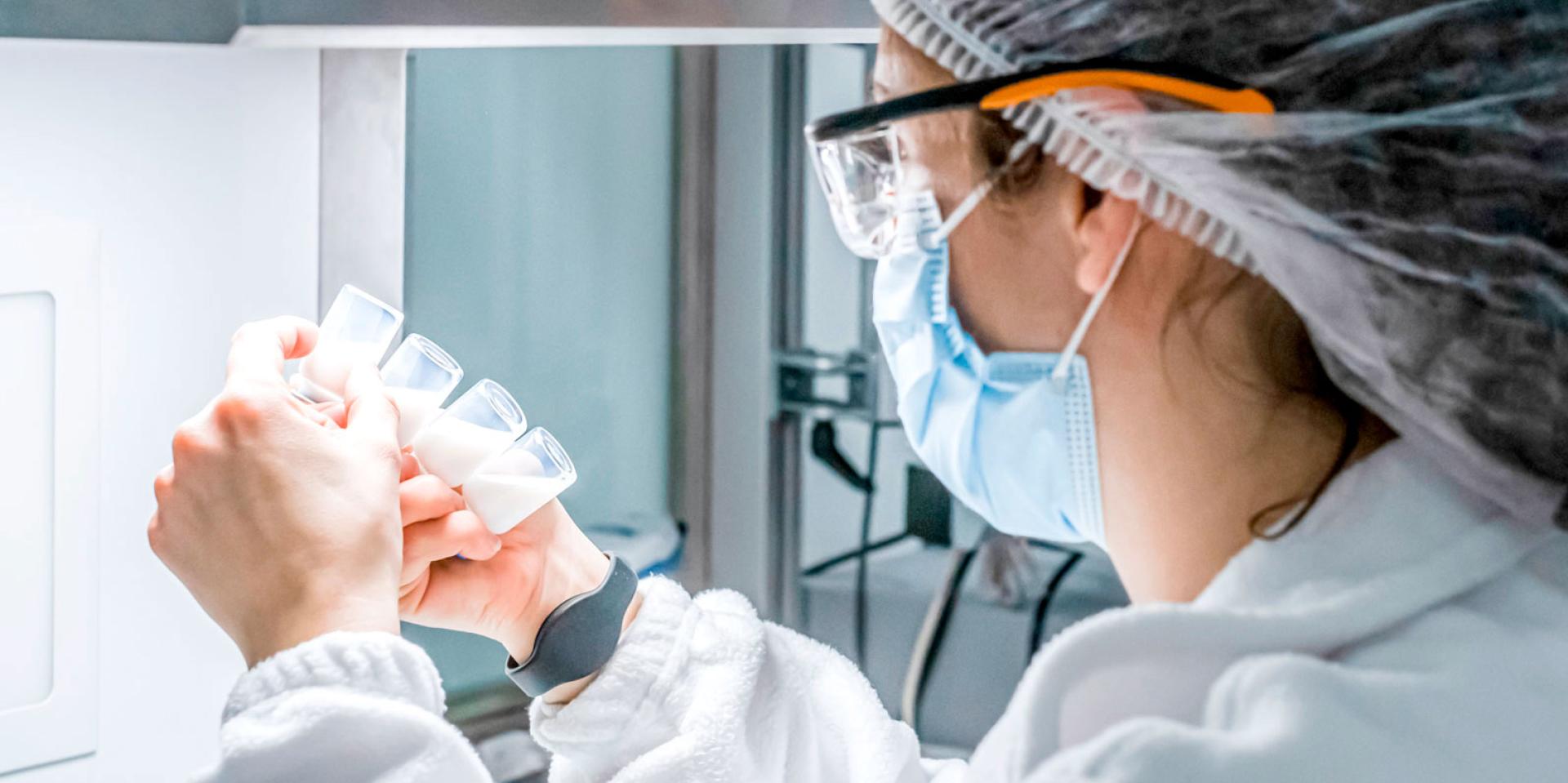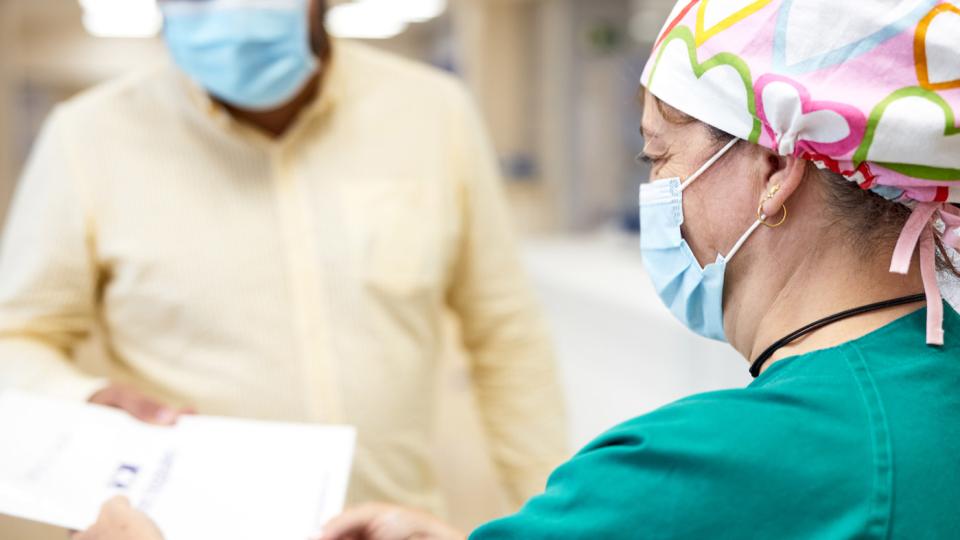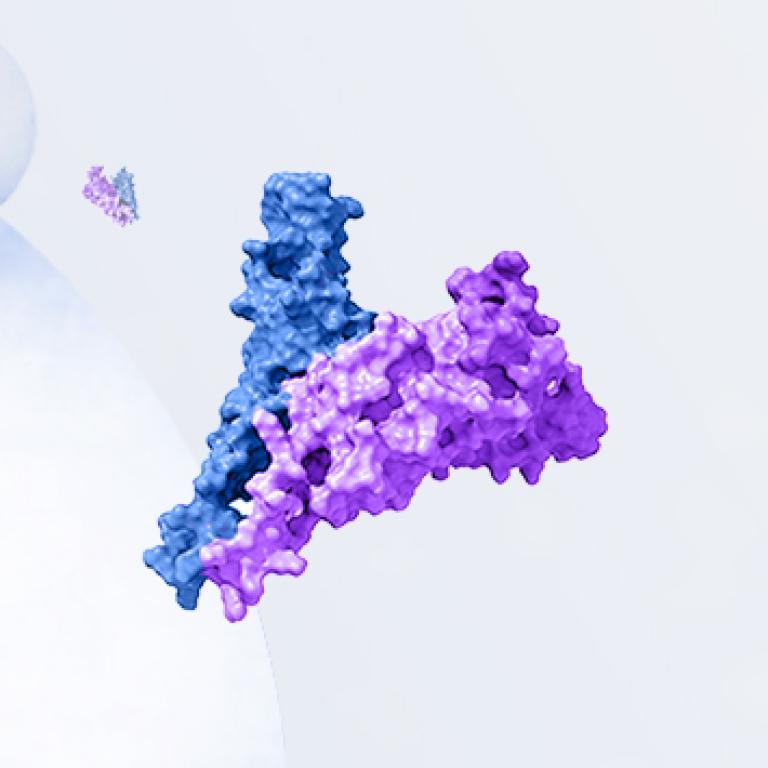COVID-19 ist eine Infektionskrankheit, die durch das als SARS-CoV-21 bekannte Coronavirus verursacht wird. Coronaviren gehören zu einer großen Familie von Viren, die Infektionen bei Menschen, Vögeln und Säugetieren verursachen können. Mitunter können sie auch von Tieren auf Menschen übertragen werden2.

Die Weltgesundheitsorganisation (WHO) wurde am 31. Dezember 2019 über die Existenz dieses neuen Virus informiert, nachdem in Wuhan (Volksrepublik China) ein Ausbruch von Fällen „viraler Lungenentzündungen“ gemeldet worden war1. Die Zahl der bestätigten Fälle stieg im Laufe des Monats Januar schlagartig an, wobei täglich Tausende neuer Fälle diagnostiziert wurden, bis zum 30. Januar 2020, als der COVID-19-Ausbruch von der WHO zu einer gesundheitlichen Notlage internationaler Tragweite erklärt wurde. Am 11. März 2020 erklärte die WHO COVID-19 offiziell zur globalen Pandemie3.
Die meisten Infizierten leiden an einer leichten oder mittelschweren Atemwegserkrankung und genesen, ohne dass eine besondere Behandlung erforderlich ist. Einige Menschen erkranken jedoch schwer und benötigen medizinische Behandlung. Ältere Menschen und Menschen mit Vorerkrankungen (wie Herz-Kreislauf-Erkrankungen, Diabetes, chronischen Atemwegserkrankungen oder Krebs) entwickeln mit höherer Wahrscheinlichkeit eine schwere Erkrankung4.
COVID-19 wird übertragen, wenn eine infizierte Person kleinste Atemwegspartikel und Tröpfchen ausatmet, die das Virus enthalten. Diese Atemwegspartikel und Tröpfchen können von anderen Menschen eingeatmet werden oder auf deren Augen, Nase oder Mund gelangen. In manchen Fällen können sie auch die Oberflächen kontaminieren, die andere Menschen berühren. Jede Person, die mit COVID-19 infiziert wurde, kann die Krankheit verbreiten, auch wenn sie selbst keine Symptome zeigt5.
Die wichtigsten grundlegenden Vorsichtsmaßnahmen, die ergriffen wurden, um die Ausbreitung des Virus zu stoppen, waren die folgenden6:
• Häufiges Händewaschen mit Wasser und Seife oder einem Handdesinfektionsgel.
• Tragen einer Gesichtsmaske, wenn es nicht möglich ist, einen ausreichenden Sicherheitsabstand einzuhalten.
• Vermeiden von überfüllten Orten, unzureichend belüfteten Innenräumen und längerem Kontakt mit anderen Menschen.
• Vermeiden von Oberflächenkontakt, insbesondere an öffentlichen Orten oder in medizinischen Einrichtungen.
• Zu Hause bleiben, wenn Symptome auftreten.
• Befolgen der örtlichen Impfrichtlinien und Empfehlungen.

Verpflichtung von HIPRA in Bezug auf COVID-19
HIPRA, mit mehr als 50 Jahren Erfahrung in der Bekämpfung übertragbarer Krankheiten durch die Entwicklung von Impfstoffen, ist ein Unternehmen, das sich für Gesundheit, Menschen, Gesellschaft und Fortschritt engagiert. Aus diesem Grund hat sich HIPRA angesichts der Ausnahmesituation von Beginn an dafür entschieden, das Know-how des Unternehmens in die Bekämpfung der Pandemie einzubringen und einen rekombinanten Proteinimpfstoff gegen SARS-COV-2 zu entwickeln (EMA-Marktzulassung am 31. März 2023).
Bibliographische Referenzen:
1. Weltgesundheitsorganisation. Grundlegende Informationen über COVID-19. [Internet] Verfügbar unter: https://www.who.int/emergencies/diseases/novel-coronavirus-2019/question-and-answers-hub/q-a-detail/coronavirus-disease-covid-19 (Zuletzt besucht: 8. März 2023)
2. „Informationen für die Öffentlichkeit. Fragen und Antworten zum neuen Coronavirus COVID-19 [Internet]“. Verfügbar unter: https://www.sanidad.gob.es/en/profesionales/saludPublica/ccayes/alertasActual/nCov/ciudadania.htm (Zuletzt besucht: 8. März 2023)
3. Hu B, Guo H, Zhou P, Shi ZL. Characteristics of SARS-CoV-2 and COVID-19. Nat Rev Microbiol. 2021;19(3):141-154.
4. Weltgesundheitsorganisation. Coronavirus. [Internet] Verfügbar unter: https://www.who.int/health-topics/coronavirus#tab=tab_1 (Zuletzt besucht: 8. März 2023)
5. Centres for Disease Control and Prevention. [Internet]. Verfügbar unter: https://www.cdc.gov/coronavirus/2019-ncov/prevent-getting-sick/how-covid-spreads.html (Zuletzt besucht: März 2023)
6. Weltgesundheitsorganisation. Fragen und Antworten über die Verbreitung von COVID-19. [Internet] Verfügbar unter: https://www.who.int/news-room/questions-and-answers/item/coronavirus-disease-covid-19-how-is-it-transmitted (Zuletzt besucht: März 2023)

